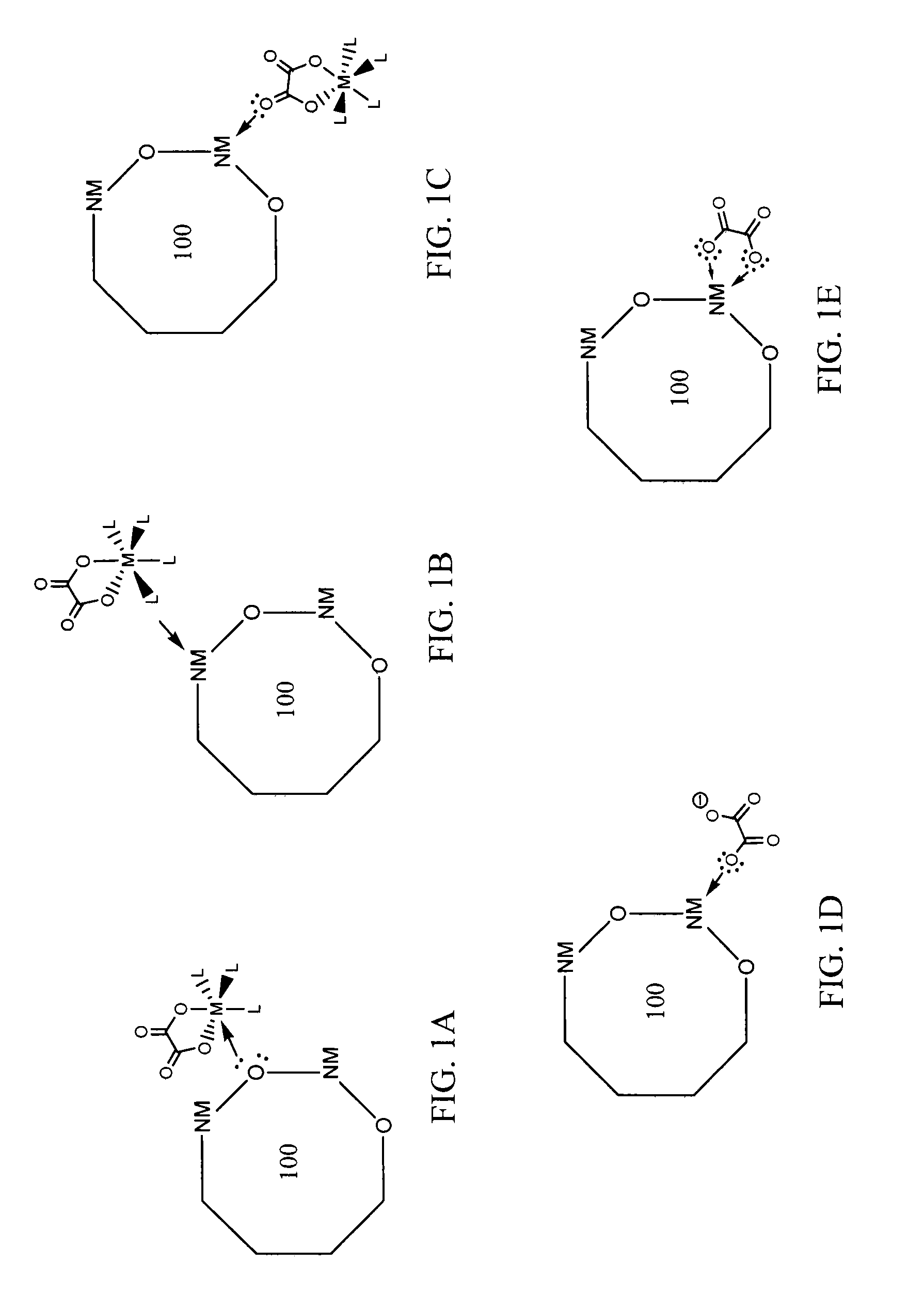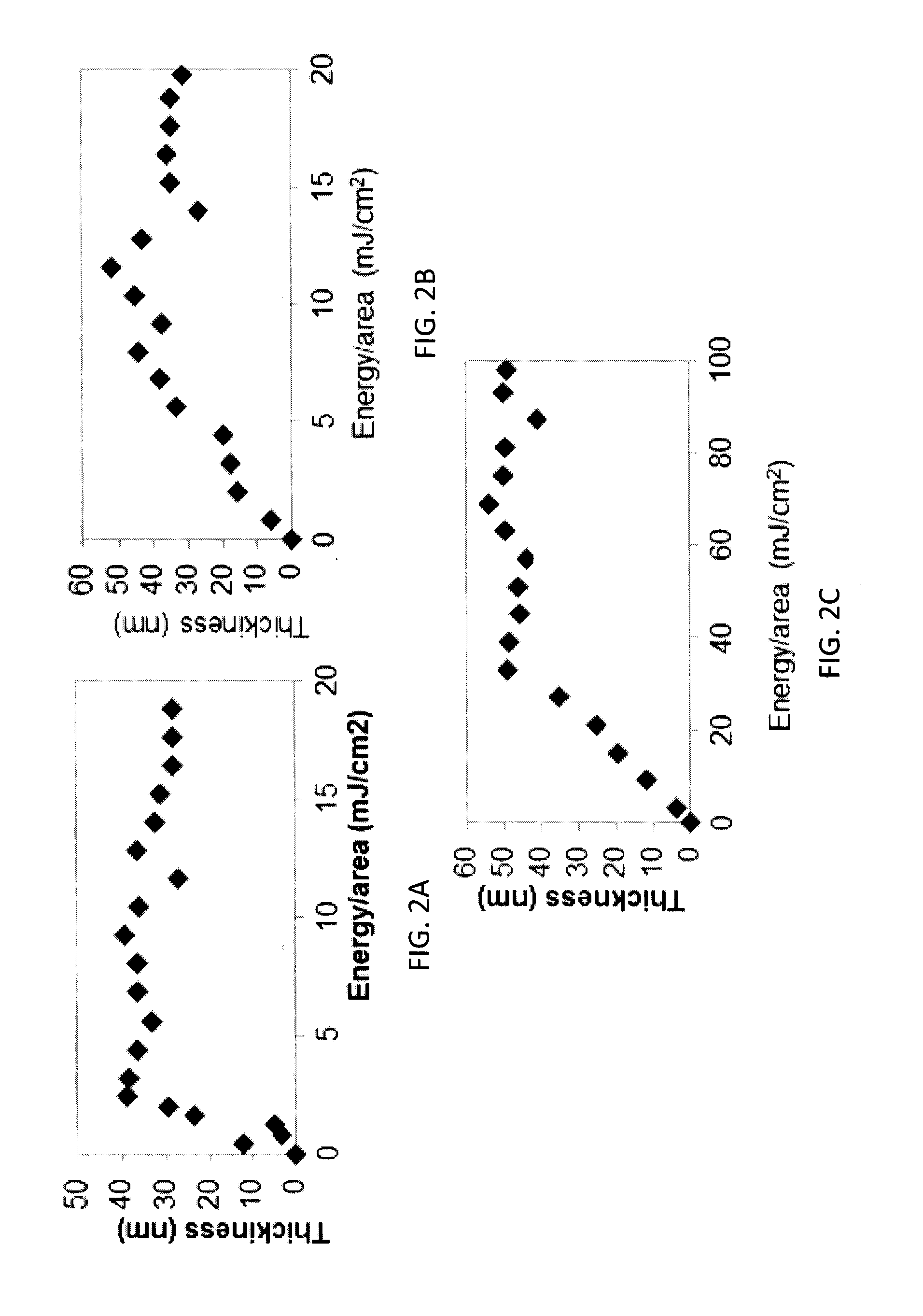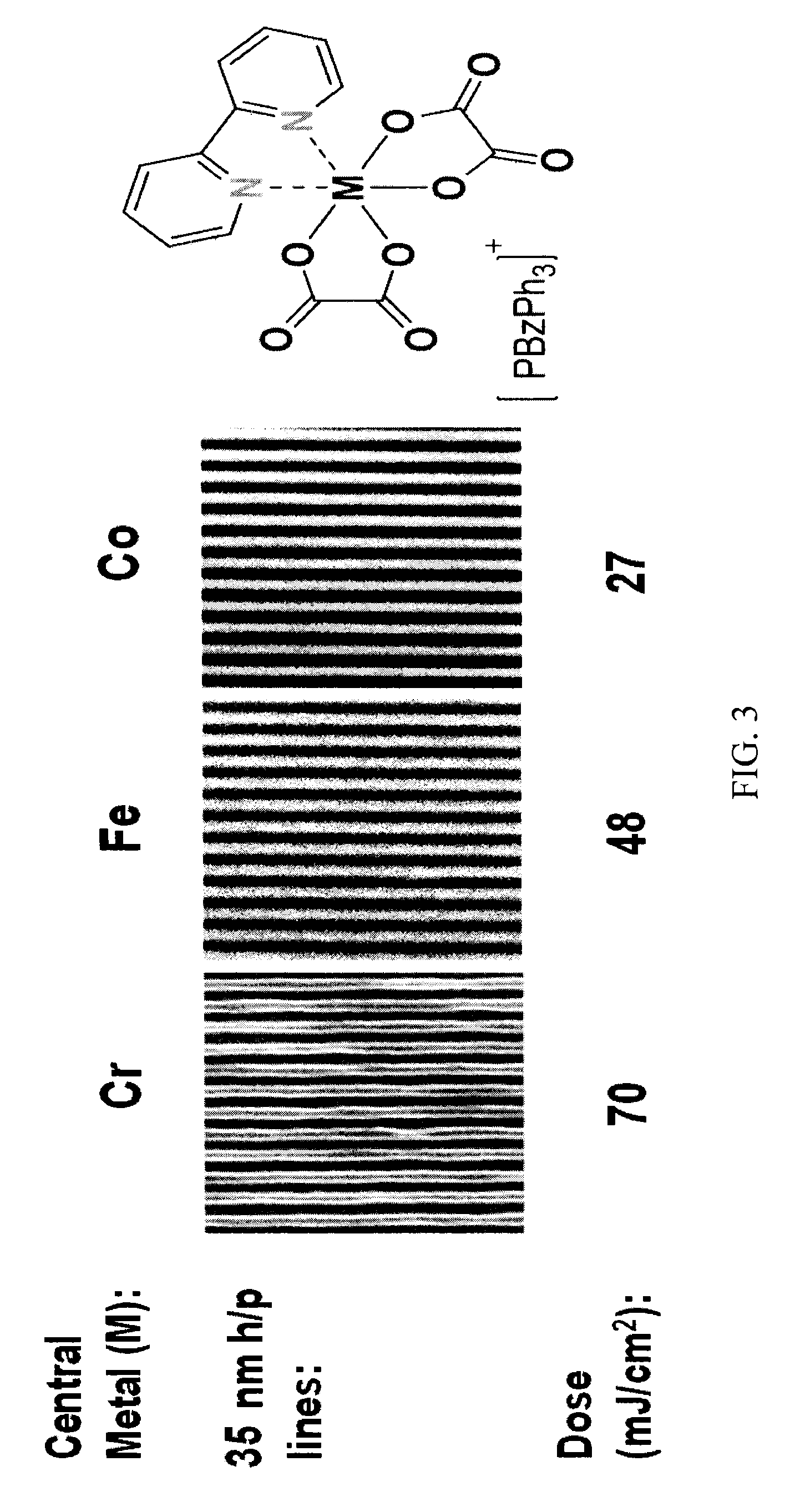Molecular Organometallic Resists for EUV
a technology of organometallic resists and euv, which is applied in the field of thin films, can solve the problems of poor manufacturing through-put, higher manufacturing cost, and general unsuitability of phenolic materials commonly used for photolithography using light wavelength 248 nm wavelength
- Summary
- Abstract
- Description
- Claims
- Application Information
AI Technical Summary
Benefits of technology
Problems solved by technology
Method used
Image
Examples
Embodiment Construction
[0016]This disclosure relates to a platform of photoresists that includes high optical density organometallic complexes. These materials possess the capability of stopping EUV photons in 20-nm films (high EUV OD) and converting the photons into secondary electrons with short diffusion lengths, causing a photochemical change that will result in negative- or positive-tone imaging.
[0017]The potential benefits of these resists are many. Organometallic films with high extreme ultraviolet optical density are able to stop more photons, thus, by utilizing these materials, thin film resists can be made without loss to sensitivity or line edge roughness. Line edge roughness increases as acid diffuses into the unexposed region, leading to a loss of resolution; however, since metals have a large range of redox potentials, the chemistry of these resists can be engineered for high sensitivity without acid catalysis, limiting potential acid diffusion problems. These materials also possess a high m...
PUM
| Property | Measurement | Unit |
|---|---|---|
| diameter | aaaaa | aaaaa |
| diameter | aaaaa | aaaaa |
| wavelength 248 nm wavelength | aaaaa | aaaaa |
Abstract
Description
Claims
Application Information
 Login to View More
Login to View More - R&D
- Intellectual Property
- Life Sciences
- Materials
- Tech Scout
- Unparalleled Data Quality
- Higher Quality Content
- 60% Fewer Hallucinations
Browse by: Latest US Patents, China's latest patents, Technical Efficacy Thesaurus, Application Domain, Technology Topic, Popular Technical Reports.
© 2025 PatSnap. All rights reserved.Legal|Privacy policy|Modern Slavery Act Transparency Statement|Sitemap|About US| Contact US: help@patsnap.com



